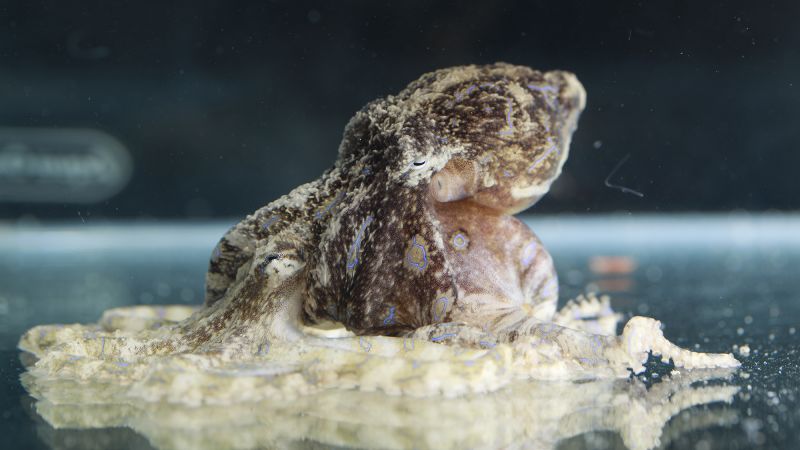The fascinating world of marine biology continues to unveil extraordinary adaptations among oceanic creatures, as highlighted by a recent study on blue-lined octopuses. This intriguing research uncovered an astonishing mating strategy employed by male blue-lined octopuses, where they inject a potent neurotoxin into the hearts of female octopuses before engaging in copulation. The primary motivation for this shocking behavior is a survival instinct aimed at avoiding cannibalistic tendencies traditionally exhibited by females of the species.
According to the study’s lead author, Wen-Sung Chung, an animal neurobiologist affiliated with the University of Queensland in Australia, male blue-lined octopuses have evolved to utilize a venom known as tetrodotoxin (TTX). This neurotoxin serves to immobilize their larger female counterparts, who can be nearly twice the size of males and have been known to consume their mating partners. The blue-lined octopus, a relatively small creature measuring approximately 4.5 centimeters in length—about the size of a golf ball—has garnered a reputation for being one of the ocean’s most hazardous inhabitants due to the extreme potency of its venom. Reports from the Australian Museum indicate that several individuals have succumbed to bites from these deadly creatures.
Remarkably, this study marks the first time evidence has surfaced that a neurotoxin is deployed during mating rituals, differing from its conventional use for hunting or self-defense. Chung expressed his astonishment at this finding, emphasizing its uniqueness in the animal kingdom. He further elucidated the phenomenon of sexual cannibalism, which is not exclusive to octopuses but can also be observed in various species, including spiders and mantises. In many cases, female octopuses gain vital energy through consuming their partners, enabling them to produce and incubate eggs. In this scenario, males effectively become an essential “final snack” for the reproductive process.
While certain octopus species have developed elongated mating arms to facilitate a safer distance during copulation, the blue-lined octopus’s relatively short mating arm necessitates close contact between the partners. Consequently, females are often at risk of becoming meals for males during mating. Chung documented the copulation behavior of blue-lined octopuses, noting the peculiar patterns involved. He discovered that males approach females from behind and target a specific area for injecting TTX, strategically delivering the neurotoxin to the female’s aorta.
Through close observation, Chung noted that the immobilized female would cease breathing for approximately one hour, allowing the male ample time to mate unchallenged. Fortunately for the females observed during the study, none succumbed to the effects of TTX, highlighting a potential resistance to the neurotoxin. Upon regaining consciousness, the female remains notably weakened, which could explain why she refrains from attacking the male immediately after mating.
Chung characterized this evolutionary strategy as “an arms race between the sexes,” suggesting that these behavioral patterns are significant in ensuring the survival of genes into future generations. He referred to this bizarre mating strategy as a “survival skill” while also conducting advanced research using powerful MRI scanners to analyze the anatomical features of the octopuses. His investigation revealed that male blue-lined octopuses possess larger venom glands compared to their female counterparts, despite their smaller overall size.
Future research may focus on examining whether the brains of males and females have undergone evolutionary changes due to this unique mating mechanism. This groundbreaking study has been published in the prestigious journal Current Biology, showcasing the complex interactions and adaptations found within the natural world. Through continued research, scientists like Wen-Sung Chung provide invaluable insights into the behaviors and evolutionary adaptations of marine life, contributing to our understanding of the intricate balance of ecosystems beneath the waves.












